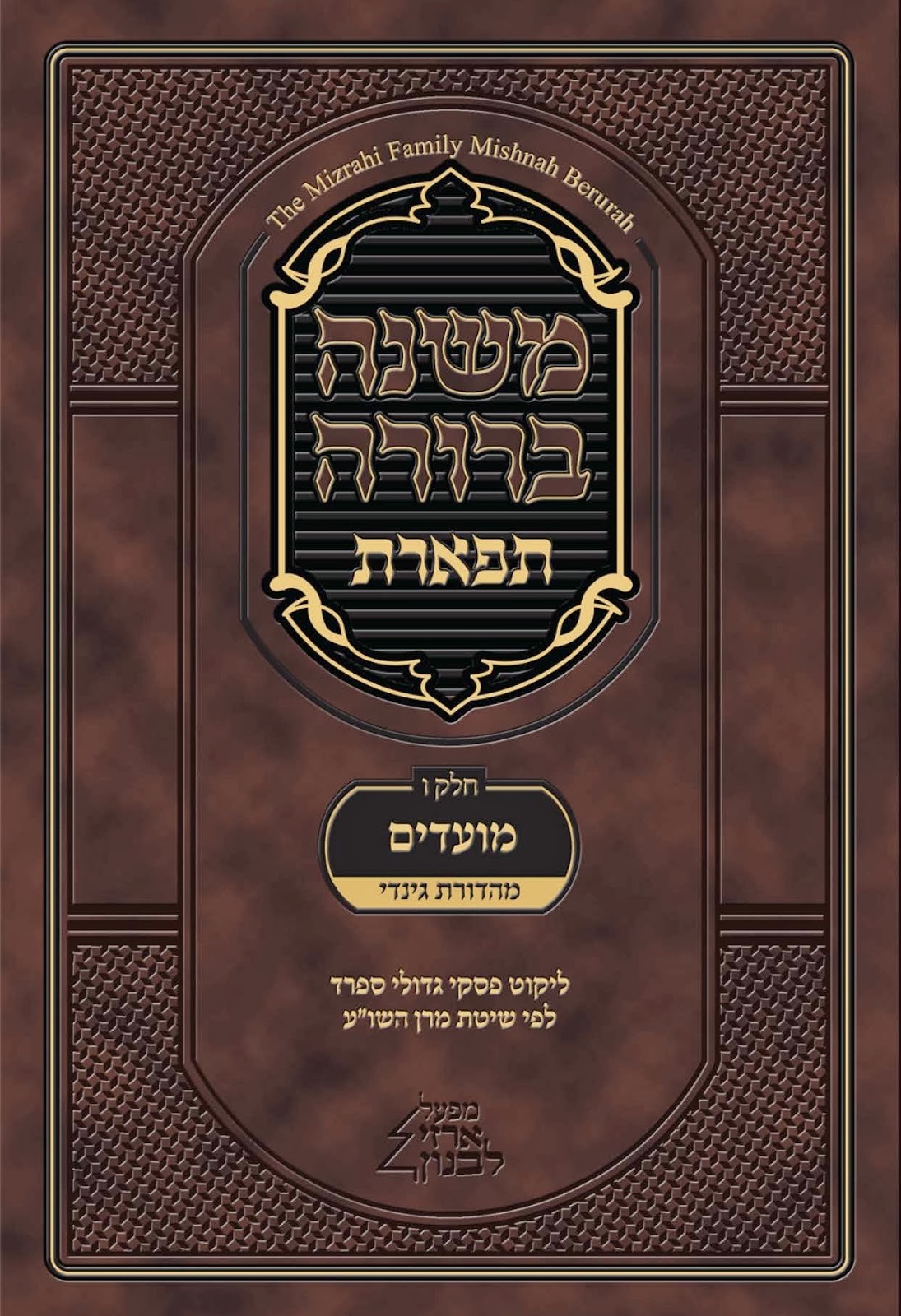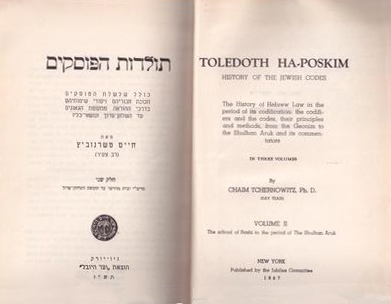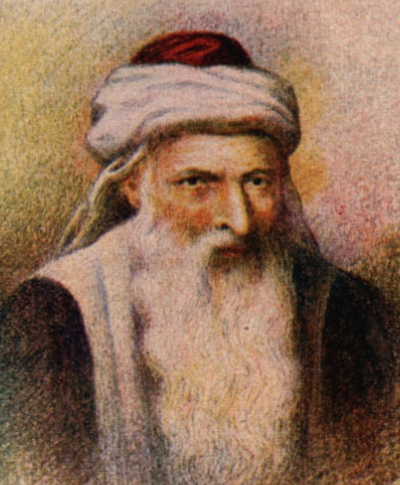|
Kitzur Shulchan Aruch (book)
The ''Kitzur Shulchan Aruch'' (קיצור שולחן ערוך), first published in 1864, is a work of halacha written by Rabbi Shlomo Ganzfried. The work was written in simple Hebrew which made it easy for the lay person to understand and contributed to its great popularity. Contents The work is a summary of the Shulchan Aruch of Rabbi Joseph Caro, with references to later rabbinical commentaries. It focuses on the Orach Chaim and Yoreh Deah sections of the Shulchan Aruch, and includes laws of daily life, Shabbat, holidays, and so on. It is divided into 221 chapters (called ''simanim''). This work was explicitly written as a popular text and as such is not at the level of detail of the ''Shulchan Aruch'' itself, while generally following the Shulchan Aruch's structure. Rabbi Ganzfried expressed his intentions in his introduction: Ganzfried based his decisions on the opinions of three Ashkenazi rabbinic authorities: Rabbis Yaakov Lorberbaum (author of ''Nesivos HaMishpat'' ... [...More Info...] [...Related Items...] OR: [Wikipedia] [Google] [Baidu] |
Shlomo Ganzfried
Shlomo Ganzfried (or ''Salomon ben Joseph Ganzfried''; 1804 in Ungvár – 30 July 1886 in Ungvár) was an Orthodox rabbi and posek best known as the author of the work of Halakha (Jewish law), the ''Kitzur Shulchan Aruch'' (Hebrew: קיצור שולחן ערוך, "The Abbreviated Shulchan Aruch"), by which title he is also known. Biography Ganzfried was born in 1804 in Ungvár, in the Ung County of the Kingdom of Hungary (present-day Ukraine). His father Joseph died when he was eight. Ganzfried was considered to be a child prodigy and Ungvár's chief rabbi and Rosh yeshiva, Rabbi Zvi Hirsh Heller assumed legal guardianship; Heller was known as "''Hershele'' the Sharp-witted" for his piercing insights into the Talmud. Heller later moved to the city of Bonyhád, and Ganzfried, then fifteen, followed him. He remained in Heller's yeshiva for almost a decade until his ordination and marriage. After his marriage he worked briefly as a wine merchant. In 1830, he abandoned commer ... [...More Info...] [...Related Items...] OR: [Wikipedia] [Google] [Baidu] |
Chayei Adam
Chayei Adam (חיי אדם "The Life of Man") is a work of Jewish law by Rabbi Avraham Danzig (1748–1820), dealing with the laws discussed in the Orach Chayim section of the Shulchan Aruch. It is divided into 224 sections - 69 dealing with daily conduct and prayer, and 155 with Shabbos (Sabbath) and Yom Tov (holidays). Chayei Adam was intended primarily "for the cultured layman", as opposed to rabbinic scholars, and the work is thus presented in a readily accessible form. In many cities, societies were formed for the purpose of studying Chayei Adam. In this work, Rabbi Danzig collected and critically sifted the '' Acharonic'' material in the field of the Halakha written in the more than two and a half centuries since the appearance of the Shulchan Aruch. A parallel work ''Nishmas Adam'', published together with Chayei Adam, discusses the halachic issues in greater depth. The two are usually printed together. The scholarship of the work is evidenced by the fact that Rabbi Chaim V ... [...More Info...] [...Related Items...] OR: [Wikipedia] [Google] [Baidu] |
Sephardi Jews
Sephardic (or Sephardi) Jews (, ; lad, Djudíos Sefardíes), also ''Sepharadim'' , Modern Hebrew: ''Sfaradim'', Tiberian: Səp̄āraddîm, also , ''Ye'hude Sepharad'', lit. "The Jews of Spain", es, Judíos sefardíes (or ), pt, Judeus sefarditas or Hispanic Jews, are a Jewish diaspora population associated with the Iberian Peninsula. The term, which is derived from the Hebrew ''Sepharad'' (), can also refer to the Mizrahi Jews of Western Asia and North Africa, who were also influenced by Sephardic law and customs. Many Iberian Jewish exiles also later sought refuge in Mizrahi Jewish communities, resulting in integration with those communities. The Jewish communities of the Iberian Peninsula prospered for centuries under the Muslim reign of Al-Andalus following the Umayyad conquest of Hispania, but their fortunes began to decline with the Christian ''Reconquista'' campaign to retake Spain. In 1492, the Alhambra Decree by the Catholic Monarchs of Spain called for the expulsi ... [...More Info...] [...Related Items...] OR: [Wikipedia] [Google] [Baidu] |
Mordechai Eliyahu
Mordechai Tzemach Eliyahu ( he, מרדכי צמח אליהו, March 3, 1929 – June 7, 2010, on the Hebrew calendar: 21 Adar I, 5689 - 25 Siwan, 5770),"The Life and Times of Rabbi Mordechai Eliyahu" Hebrew; ''Harav.org'' was an Israeli , , and spiritual leader. The son of a Jerusalem Kabbalist, in his youth, Eliyahu was active in , a radical religious underg ... [...More Info...] [...Related Items...] OR: [Wikipedia] [Google] [Baidu] |
Mishna Berura
The ''Mishnah Berurah'' ( he, משנה ברורה "Clear Teaching") is a work of ''halakha'' (Jewish law) by Rabbi Yisrael Meir Kagan (Poland, 1838–1933, also known as ''Chofetz Chaim''). It is a commentary on ''Orach Chayim'', the first section of the ''Shulchan Aruch'' which deals with laws of prayer, synagogue, Shabbat and holidays, summarizing the opinions of the ''Acharonim'' (post-Medieval rabbinic authorities) on that work. The title comes from b. Shabbat 139a, "They will rove, seeking the word of the LORD, but they will not find it (Amos 8:12) -- they will not find clear teaching and clear law in one place." Contents The ''Mishnah Berurah'' is traditionally printed in 6 volumes alongside selected other commentaries. The work provides simple and contemporary explanatory remarks and citations to daily aspects of ''halakha''. It is widely used as a reference and has mostly supplanted the Chayei Adam and the Aruch HaShulchan as the primary authority on Jewish daily living am ... [...More Info...] [...Related Items...] OR: [Wikipedia] [Google] [Baidu] |
Poskim
In Jewish law, a ''Posek'' ( he, פוסק , pl. ''poskim'', ) is a legal scholar who determines the position of ''halakha'', the Jewish religious laws derived from the written and Oral Torah in cases of Jewish law where previous authorities are inconclusive, or in those situations where no clear ''halakhic'' precedent exists. The decision of a posek is known as a ''psak halakha'' ("ruling of law"; pl. ''piskei halakha'') or simply a "psak". ''Piskei halakha'' are generally recorded in the responsa literature. Orthodox Judaism Poskim play an integral role in Orthodox Judaism. * Generally, each community will regard one of its ''poskim'' as its ''Posek HaDor'' ("Posek of the present Generation"). * Most rely on the rav in their community (in Hasidic communities, sometimes the rebbe) or the leading posek. Poskim will generally not overrule a specific law unless based on an earlier authority: a posek will generally extend a law to new situations but will not ''change'' the Ha ... [...More Info...] [...Related Items...] OR: [Wikipedia] [Google] [Baidu] |
Achronim
In Jewish law and history, ''Acharonim'' (; he, אחרונים ''Aḥaronim''; sing. , ''Aḥaron''; lit. "last ones") are the leading rabbis and poskim (Jewish legal decisors) living from roughly the 16th century to the present, and more specifically since the writing of the ''Shulchan Aruch'' (Hebrew: , "Set Table", a code of Jewish law) in 1563 CE. The ''Acharonim'' follow the ''Rishonim'', the "first ones"—the rabbinic scholars between the 11th and the 16th century following the ''Geonim'' and preceding the ''Shulchan Aruch''. The publication of the ''Shulchan Aruch'' thus marks the transition from the era of Rishonim to that of Acharonim. Consequences for Halakhic change The distinction between the ''Acharonim'', ''Rishonim'' and ''Geonim'' is meaningful historically. According to the widely held view in Orthodox Judaism, the Acharonim generally cannot dispute the rulings of rabbis of previous eras unless they find support from other rabbis in previous eras. Yet the oppo ... [...More Info...] [...Related Items...] OR: [Wikipedia] [Google] [Baidu] |
Ben Ish Hai
Yosef Hayim (1 September 1835 – 30 August 1909) ( Iraqi Hebrew: Yoseph Ḥayyim; he, יוסף חיים מבגדאד) was a leading Baghdadi ''hakham'' (Sephardi rabbi), authority on ''halakha'' (Jewish law), and Master Kabbalist. He is best known as author of the work on ''halakha'' ''Ben Ish Ḥai'' () ("Son of Man (who) Lives"), a collection of the laws of everyday life interspersed with mystical insights and customs, addressed to the masses and arranged by the weekly Torah portion. Biography Hayim initially studied in his father's library, and, at the age of 10, he left ''midrash'' ("school room") and began to study with his uncle, David Hai Ben Meir, who later founded the Shoshanim LeDavid Yeshiva in Jerusalem. In 1851, he married Rachel, the niece of Abdallah Somekh, his prime mentor, with whom he had a daughter and two sons. When Hayim was only twenty-five years old, his father died. Despite his youth, the Jews of Baghdad accepted him to fill his father's place as ... [...More Info...] [...Related Items...] OR: [Wikipedia] [Google] [Baidu] |
Rabbinic Judaism
Rabbinic Judaism ( he, יהדות רבנית, Yahadut Rabanit), also called Rabbinism, Rabbinicism, or Judaism espoused by the Rabbanites, has been the mainstream form of Judaism since the 6th century CE, after the codification of the Babylonian Talmud. Rabbinic Judaism has its roots in Pharisaic Judaism and is based on the belief that Moses at Mount Sinai received both the Written Torah (''Torah she-be-Khetav'') and the Oral Torah (''Torah she-be-al Peh'') from God. The Oral Torah, transmitted orally, explains the Written Torah. At first, it was forbidden to write down the Oral Torah because the rabbis feared that it would become rigid and lose its flexibility, but after the destruction of the Second Temple they decided to write it down in the Talmud and other rabbinic texts. Rabbinic Judaism contrasts with the Sadducees, Karaite Judaism and Samaritanism, which do not recognize the Oral Torah as a divine authority nor the rabbinic procedures used to interpret Jewish scripture. ... [...More Info...] [...Related Items...] OR: [Wikipedia] [Google] [Baidu] |
Michael Broyde
use both this parameter and , birth_date to display the person's date of birth, date of death, and age at death) --> , death_place = , death_cause = , body_discovered = , resting_place = , resting_place_coordinates = , burial_place = , burial_coordinates = , monuments = , nationality = , other_names = , citizenship = United States , education = , alma_mater = New York University Law School (J.D.) , occupation = , years_active = , era = , employer = Emory University School of Law , organization = , agent = , known_for = , notable_works = , style = , height = , television = , title = Professor of law and the Academic Director of the Law and Religion Program , term = , predecessor = , successor = , party = , mo ... [...More Info...] [...Related Items...] OR: [Wikipedia] [Google] [Baidu] |
History Of The Jews In Hungary
The history of the Jews in Hungary dates back to at least the Kingdom of Hungary, with some records even predating the Hungarian conquest of the Carpathian Basin in 895 CE by over 600 years. Written sources prove that Jewish communities lived in the medieval Kingdom of Hungary and it is even assumed that several sections of the heterogeneous Hungarian tribes practiced Judaism. Jewish officials served the king during the early 13th century reign of Andrew II. From the second part of the 13th century, the general religious tolerance decreased and Hungary's policies became similar to the treatment of the Jewish population in Western Europe. The Jews of Hungary were fairly well integrated into Hungarian society by the time of the First World War. By the early 20th century, the community had grown to constitute 5% of Hungary's total population and 23% of the population of the capital, Budapest. Jews became prominent in science, the arts and business. By 1941, over 17% of Budapest's ... [...More Info...] [...Related Items...] OR: [Wikipedia] [Google] [Baidu] |
Asher Ben Yechiel
Asher ben Jehiel ( he, אשר בן יחיאל, or Asher ben Yechiel, sometimes Asheri) (1250 or 1259 – 1327) was an eminent rabbi and Talmudist best known for his abstract of Talmudic law. He is often referred to as Rabbenu Asher, “our Rabbi Asher” or by the Hebrew acronym for this title, the Rosh (, literally "Head"). His yahrzeit is on 9 Cheshvan. Biography The Rosh was probably born in Cologne, Holy Roman Empire, and died in Toledo. His family was prominent for learning and piety, his father Yechiel was a Talmudist, and one of his ancestors was Rabbi Eliezer ben Nathan (the ''RaABaN''). Asher had eight sons, the most prominent of whom were Jacob (author of the ''Arba'ah Turim'') and Judah. In 1286, King Rudolf I had instituted a new persecution of the Jews, and the great teacher of the Rosh, Rabbi Meir of Rothenburg, left Germany but was captured and imprisoned. The Rosh raised a ransom for his release, but Rabbi Meir refused it, for fear of encouraging the imprison ... [...More Info...] [...Related Items...] OR: [Wikipedia] [Google] [Baidu] |







